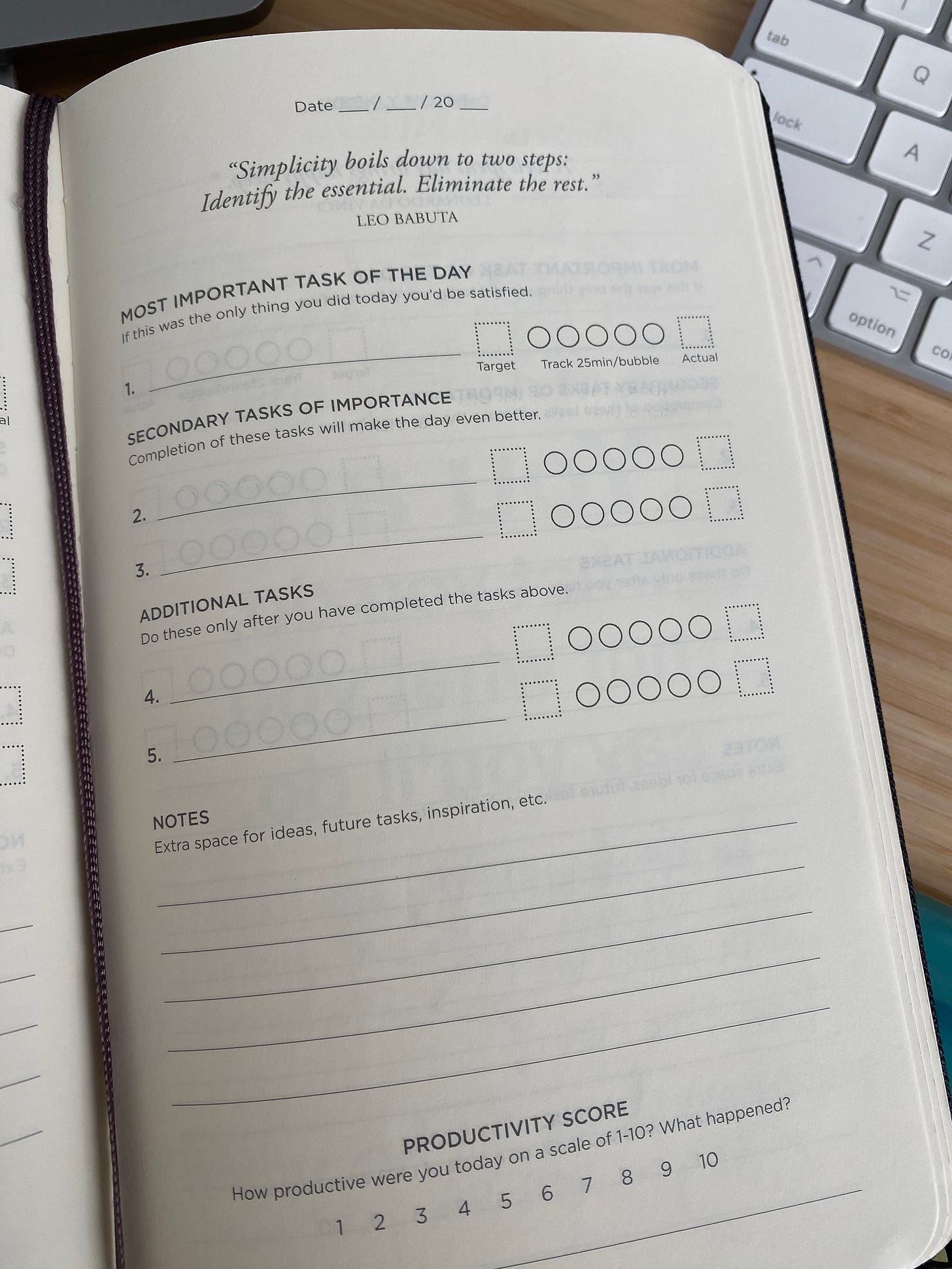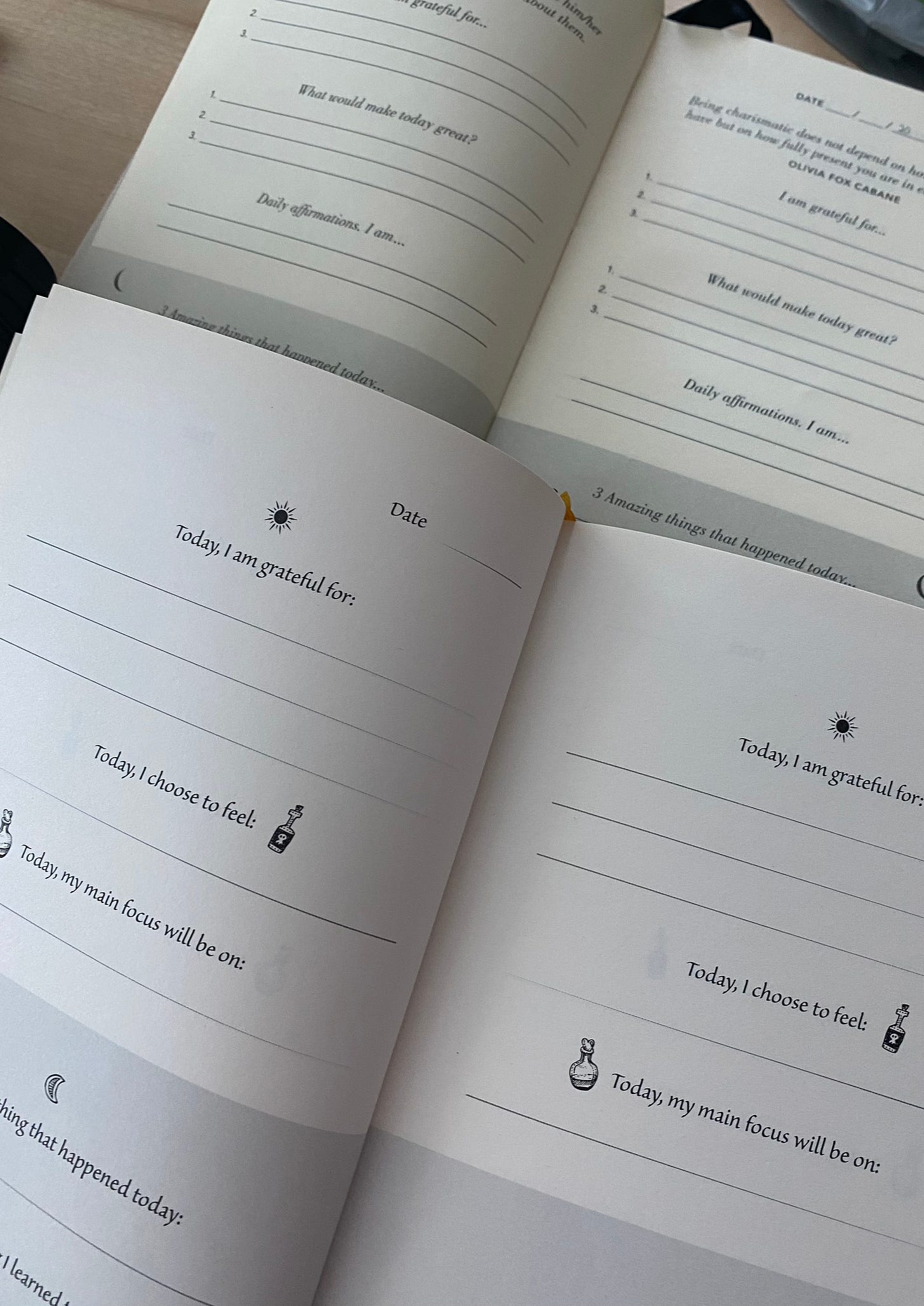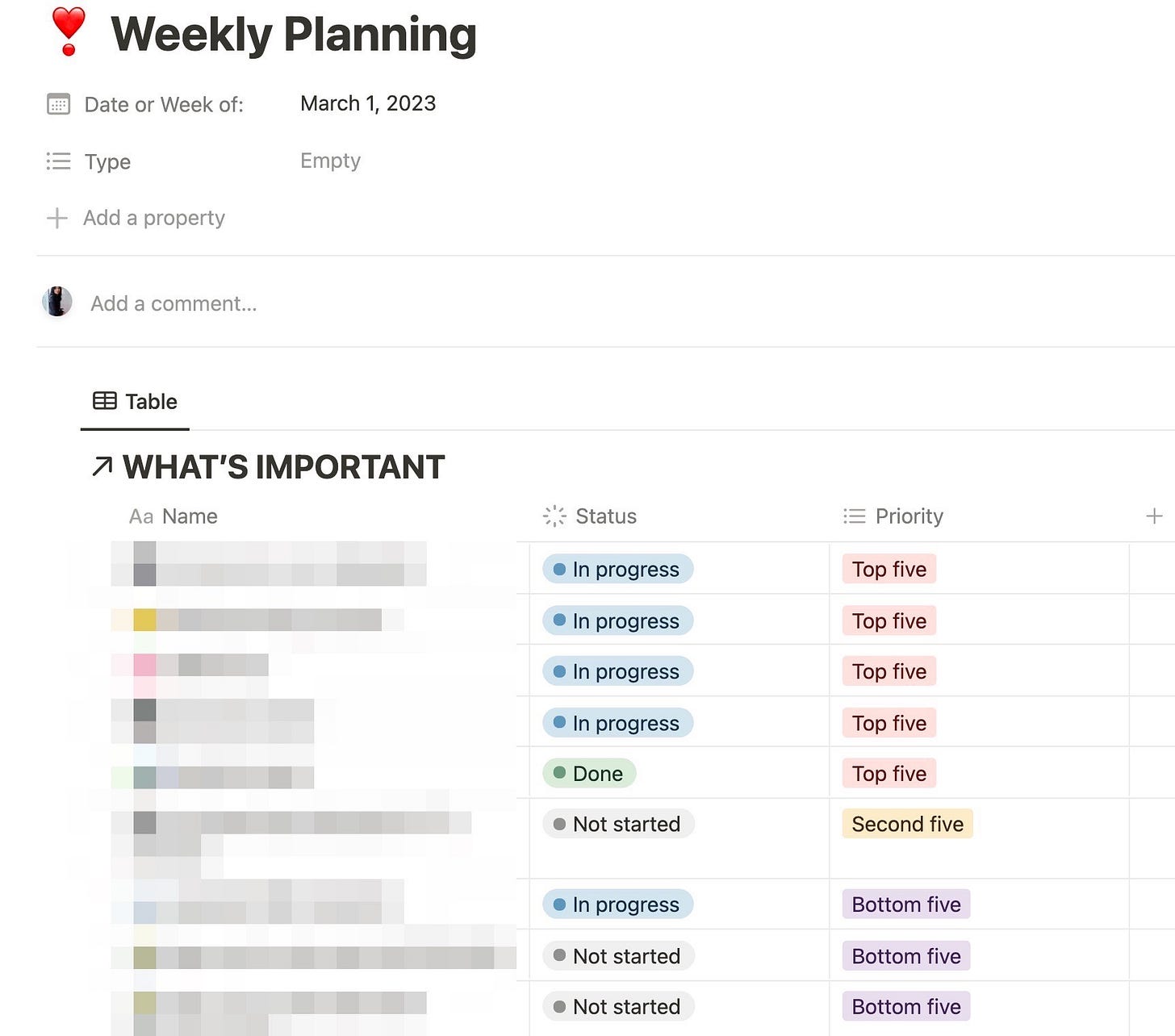How to make your own 5 minute journal
You don't need to spend money on costly pre-printed workbooks
How are those new year’s resolutions coming along?
Did you pick open-ended, lofty goals?
Or did you pick ones you can easily track, say, on a daily or weekly basis?
Did you even write them down?
Don’t feel bad if, along with the looming Ides of March, you’ve already lost focus.
Ever since I stopped writing down my New Year’s resolutions, my life’s been less stressful, because doing so felt kinda trivial and unnecessarily obligatory.
But that doesn’t mean I don’t write down any goals.
Instead of setting once-a-year goals, I do my best to implement a daily and weekly practice of self reflection, improvement, and getting things done.
These practices are inspired by methods included in the Five-minute Journal (the 5MJ, for short) and a weekly Productivity Planner.
Here’s how to use them to help you get back on the horse, and stay on.
What is the 5MJ and Productivity Planner
My 5MJ and productivity planning exercises were learned from two books by Intelligent Change: The 5-minute Journal and the Productivity Planner.
I first discovered the Productivity Planner about a decade ago, and the 5MJ more recently after it was mentioned by productivity experts like Tim Ferriss as part of his daily routine, which you can see here.
So, how do they work?
How to 5MJ
As its name implies, the 5MJ prompts you to take “5 minutes” each morning (preferably within an hour of waking up) to journal, primarily about 3 key things:
What you’re grateful for,
What your focus or intention is for the day, and,
How you’re generally feeling
This daily practice aims to help you achieve a momentary pause before you go on about your hectic day.
More importantly, it emphasizes an attitude of gratitude, which we can all benefit from. Maybe your gratitude is wide and philosophical, like you woke up on the top side of the earth, in good health, with food to eat, and you have a support system of family and friends, or simple, like feeling refreshed after an ample night of sleep.
Personally, the 5MJ practice helps me take a beat and be present.
I could also argue it serves in lieu of meditation, because meditation doesn’t come easily for many people, including me. And, as a writer, I like the general daily practice of recording my 5MJ.
How to use a Productivity Planner
The Productivity Planner helps you get laser-focused on both daily, weekly, and monthly goals.
If you’re familiar with the Pomodoro technique of time-blocking 20-minute distraction-free increments for dedicated work to finish tasks, then this is right up your alley.
You can write down your goals and track at a micro level how many blocks of time you’re taking to achieve them, and then zoom out for weekly and even monthly reflection.
Time-tracking or blocking can seem pretty intense at first if you’ve never done it before. But over time, doing so may reveal interesting behaviors or even breakthroughs when it comes to focused work and personal discipline for getting things done.
So, how can you get started on both of these?
Well, the easy and obvious choice is to purchase the notebooks. But, at $64 for the pair, these two (admittedly beautiful) notebooks can be costly.
However, if you’d like a full introduction and the look and feel of pre-printed, templated, leather bound journals to keep everything organized, then by all means, buy them.
As printed, the 5MJ claims to last ~6 months with daily journaling, and the Productivity Planner ~90 days. So if you were diligent, then you’d be looking at just under $60 for the 5MJ and $140 for the Productivity Planner, or about $200 per year.
Then, once you’ve gotten into a habit and adopted a steady journaling practice, you can create your own templates.
How to create your own 5MJ and productivity planner
You can easily create your own 5MJ or productivity planning practice.
For starters, you could purchase your own Moleskin or plain paper notebook to write down daily, weekly, and monthly templates, and then journal accordingly.
I’ve also seen abbreviated versions of the 5MJ books:
My 5MJ is pared down to something like this. You can pick either format; answer a question or state an affirmation:
Question // Affirmation
What am I grateful for today? //
Today, I’m grateful for …How am I feeling today? //
Today, I choose to feel …What’s my main focus or intention today? //
Today, my main focus will be …
At the end of each day, you’re also supposed to revisit your 5MJ, to reflect on how your day went, with the following question or affirmation:
What amazing thing happened today? //
One amazing thing that happened today:What’s one thing I learned today? //
One thing I learned today:
I don’t always get back to writing at the end of the day, and that’s something I’m working at.
But when I do, I admit I feel a sense of pride and accomplishment that I took time to reflect and bring my day full circle.
How to maintain a 5MJ that goes everywhere you go
If you’re like me and travel frequently, then you may find it cumbersome or impractical to keep up with physical journals.
As much as I enjoy writing longhand because I find it therapeutic and more intentional, I value minimalism, consolidation, and lean traveling—carry-ons only, am I right—more.
To solve for this, I started jotting things down on my my phone’s notepad, but then I graduated to creating a Notion board with my own pre-filled templates, like this:
My Notion template follows an affirmation format like above:
My weekly productivity planner categorizes my priorities from top, middle, to bottom, and also tracks what’s done, in progress, or not yet started:
If you use Notion and you want to steal my template, then let me know here:
There’s no right or wrong way to 5MJ
Remember, there’s no right or wrong way to do this. I think the point here is to get into the habit of daily and weekly gratitude, goal-setting, and productivity planning.
These exercises also keep me in check of the weekly short term goals but also longer term goals so I can work toward achieving things in baby steps.
So, try it for yourself! Tell me what systems you use and if this works for you.
***
Until next time,
Shindy
Follow me on Instagram + TikTok
***
P.S. I was on hiatus, but am back to a weekly cadence. I launched Left Brain, Right Brain with the intent of it being a weekly newsletter. But at the end of last year, I had to focus on finishing up my company acquisition (which I’ll write about in a subsequent newsletter).
After the holidays, I took a beat to decompress. I’m now practicing what I preached to content clients in “committing to a cadence,” so you’ll be getting these more frequently, on a weekly basis (they’re at the top of my productivity planner 😉).
***
Thanks for reading Left Brain, Right Brain 🧠! If you enjoy it, then please subscribe to support my work, or share it with someone who you think can find value in it.
You’ll receive new posts before anyone else and social media:






